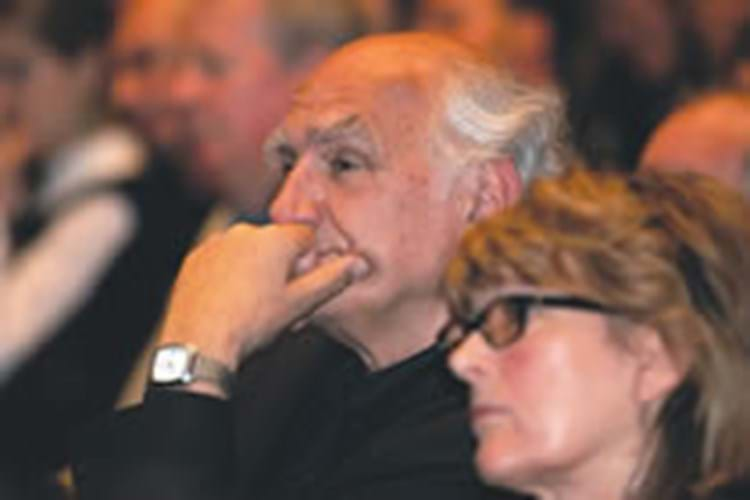
Disposable income
Both Future Foundation chief executive Paul Flatters and specialist research expert Sarah Farrugia, who advises antiques fairs, painted a picture of an affluent Britain with money to spend.
Disposable income would double within a generation and there were now 1.6m in the country earning more than £50,000 a year.
We may be richer, Mr Flatters argued, but we are also far more discriminating in spending our wealth, and there is a strong sensitivity to the notion of achieving value for money when we buy.
Choice
Again, both specialist speakers in the morning and afternoon agreed that, with the explosion of brands over the past two decades and the huge pull on the nation's spending power, the winners will be those who make choosing easier and more enjoyable for the buyer.
While choice is generally seen as a good thing, said Mr Flatters, the idea that we are "drowning" in choice makes people anxious and consumes their time. In certain areas of their lives, people want more certainty, and this can come from familiarity with a brand and its pricing. With antiques, dealing firms could market their names better as brands to be trusted on quality, service and price.
Image
Image seems to be the industry's greatest problem, Sarah Farrugia explained. "I always thought of antiques as square, dark brown and boring," a view transformed by her visits to the Olympia fairs. "What you are actually selling are beautiful things with a history."
The trade also need to do more to help themselves, she added. At the moment shops and stands at fairs convey an image of being very exclusive, overpriced and snooty, and she showed a series of slides to emphasise her point. A lot of the people with the disposable income to spend were disparagingly referred to as "new money". These people needed to be welcomed and helped to spend their money.
"It's not about you and what you want to sell us,"she told the conference. "It's about us and what we want."
Taking herself as an example, she argued how a "breakthrough" purchase at an antiques fair rapidly increased her appreciation of what they had to offer.
But it was not just about seeing something you might want, it was also about making the visit to the shop or stand an enjoyable experience. Clear prices would help the browser feel less intimidated, and displays needed to grab the passer-by rather than turn them away.
The industry needs to market itself better to instil an air of confidence as well as welcome - Sarah Farrugia did not know about the trade associations or publications before she took a special interest in the market.
Her advice? Design and PR are the keys to getting noticed. "You need education programmes, fun events, PR noise as a group, and you need to co-ordinate activities," she said. Supporting fairs actively, joint ventures with modern retailers and raising awareness generally would all help boost buyers' confidence, she argued.
She also advised dealers to "blur the edges" between antiques and other more modern furnishings when trying to attract public attention. People don't set out to buy antiques, she argued, they set out to buy something for their home. If it happens to be antique, then fine, but that is not the prerequisite.
Marketing
Both the dealers who spoke at the beginning of the afternoon and the experts who followed them stressed the vital importance of the internet in helping to market your business.
Dealer and entrepreneur Bernard Shapero, who spoke on diversification, advised that any business without a website was fooling themselves if they thought they could prosper.
Helen Linfield looked at the advantages of building up a mutually beneficial relationship with interior decorators, while Lennox Cato showed how a simple strategy of improving communication all round could pay dividends without necessarily having to spend a great deal of money. "Get involved with the local press," he advised, explaining how he had enjoyed local radio and press coverage after setting up a special exhibition to coincide with National Antiques Day.
Hugo Peel, chief executive of Peel & Co and Professional Connections, advises on marketing, PR and recruitment issues. He told the conference that the industry needed a national media campaign to create an awareness of the trade and to make antiques familiar and attractive.
Such a campaign would cost about £100,000, a sum that could be gathered simply by getting every LAPADA and BADA member to put aside 20p a day for a year. Other easily raised sums could take the fund to £125,000, he argued.
SEATED and ready for the event to start, delegates, such as those image right, were taken aback to spot a hunched and hooded figure wander onto the podium and slowly take in his surroundings.
As the lights went up, the hood was thrown back to reveal ATG Editor in Chief Mark Bridge, who used his dramatic entrance to illustrate how, in business, perception is not necessarily everything.
"Assumptions can be dangerous," he told the gathering. "It can often be the scruffily dressed person wandering around your shop or onto your stand at a fair that is spending."
Traditional social divides had disappeared (an argument strongly endorsed by later speakers) and there is now an affluent and intelligent section of society who are intimidated by antiques shops.
Why is it that when a new Ikea opens, there is a riot to get in through the doors, whereas when a new antiques shop opens there is hardly a ripple, he asked. The conference was there to address the question of how, when shopping is a major activity of a major part of the population, we can make people spend money on art and antiques.




